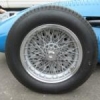The équipe Mors for the 1908 Grand Prix de l'ACF:
In the last week of May 1908, Mors entered three racers for the Grand Prix de l'ACF/Dieppe, at double fees, to be driven by Jenatzy, Jarrott and Landon.
On 1 July 1908, Mors announced that Jarrott had been replaced by a driver named Robin (first name not mentioned).
In the French press, Landon was described as "chef des essais aux usines Mors" = chief tester of the Mors factory. Landon finished fourth in the 1907 road race from Moscow to Petersburg.
Robin was described as having been active in powerboats. The Grand Prix at Dieppe was to be his first appearance at the wheel of a racing car.
William Bradley wrote in his Grand Prix report in July 1908:
"Instead of the forty-nine cars originally entered, the actual starters were forty-eight, the third Mors, originally intended for Chales Jarrott, but later turned over to a factory mechanic, being absent on account of a break-up while on a previous practice spin."
Two cars started, driven by Jenatzy and Landon.
So it is not clear if Landon or one of the riding mechanics (Jenatzy/Dayssiolles, Landon/Bache, Robin/Bauer) damaged one of the cars during practice so that Landon took over Robin's car in the race; and if Robin's exact name was Noel M. Robins who handled the Wolseley-Siddeley powerboat during the 1908 season.














